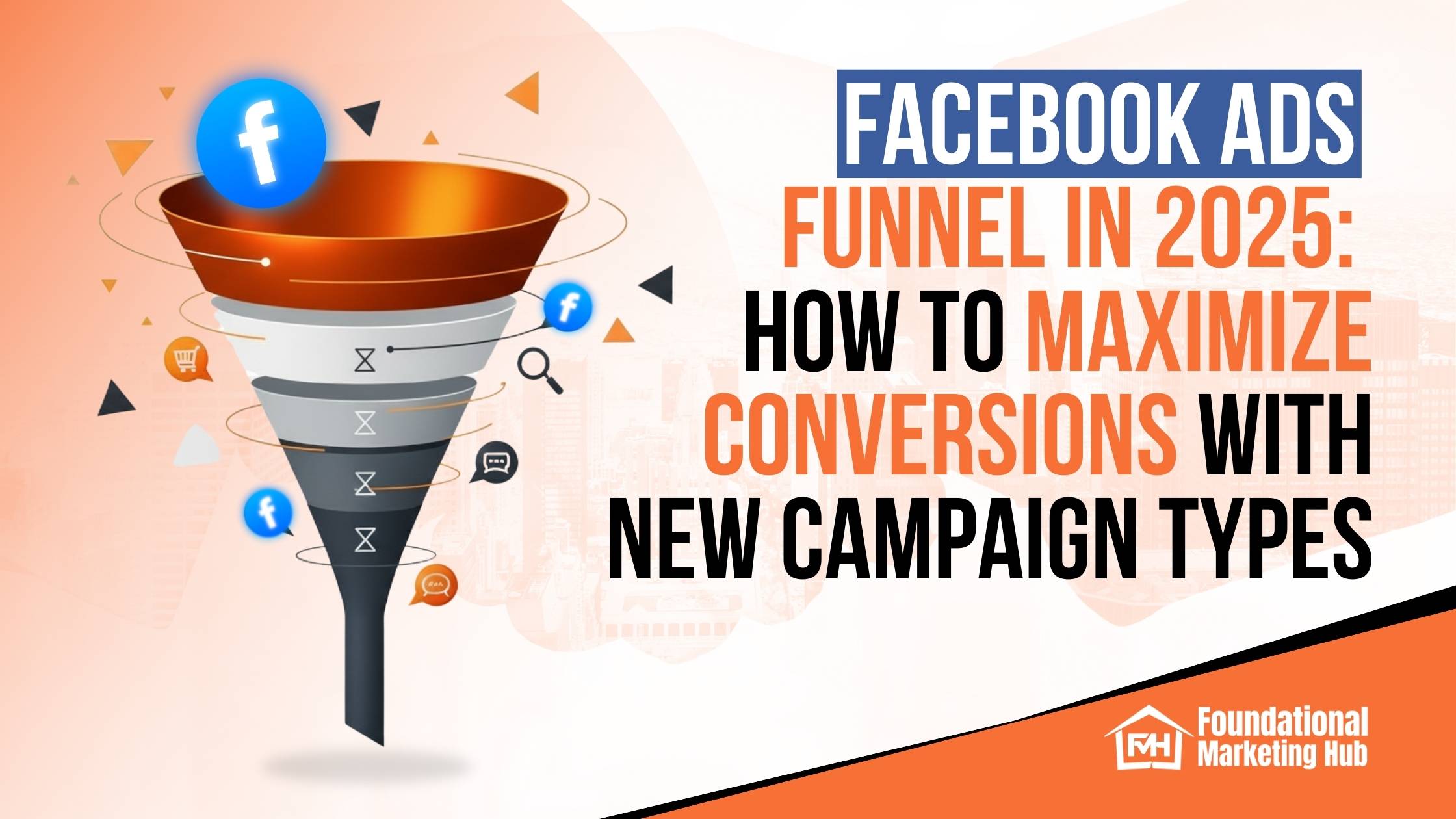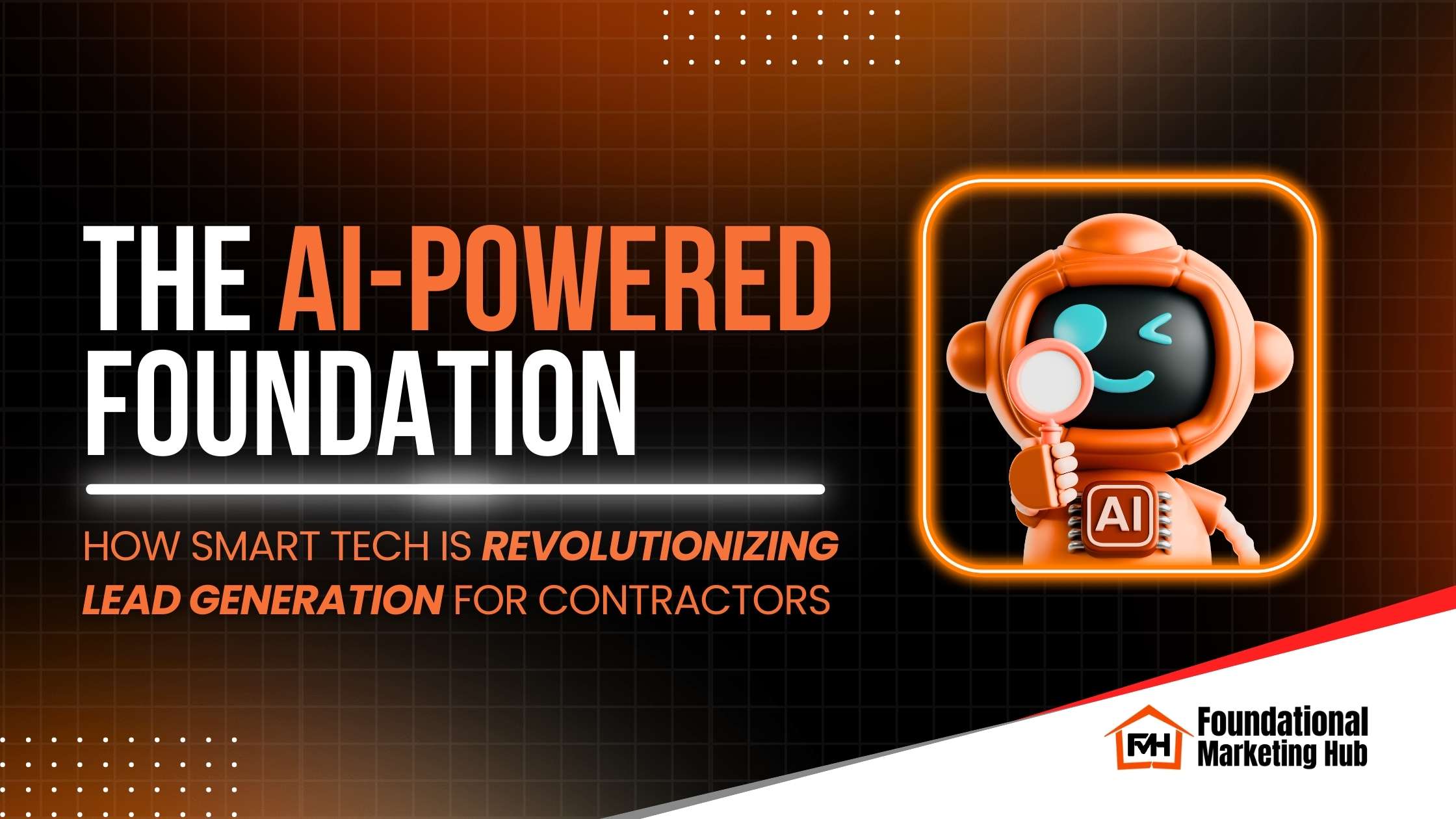
Future-Proof Your Foundation Repair SEO Strategy: What’s Next in 2025?
Why Local SEO is Evolving (And What It Means for You)
Let’s be real. If you’re still relying on the same SEO tactics from a couple of years ago, you’re probably already feeling the impact. Local SEO in 2025 isn’t what it used to be. Back in the day, you could just set up your Google Business Profile, throw in your business hours and phone number, and you were good to go. But now? Google expects more. And so do your customers.
If your goal is to keep bringing in those high-quality local leads—the ones who are ready to hire you for a slab repair or a basement waterproofing job, you’ve got to level up!
Here’s what’s really changing in the world of local SEO and how it affects your foundation repair business:
What’s changed in 2025?

Search engines aren’t just matching keywords anymore. Google’s AI is analyzing why someone is searching and how they interact with your site once they find you. It’s reading between the lines, looking at things like:
- Did they click your listing?
- Did they stay on your page or bounce right off?
- Are you giving them real answers or just keyword stuffing?
In other words, Google is getting better at sniffing out quality so your content needs to be helpful, human, and actually worth reading.
For a deeper dive into optimizing your content for AI and intent-based search, check out Effective SEO Techniques for Foundation Repair in 2025.
It’s not just about typing “foundation repair near me” into a search bar anymore. A growing number of homeowners are saying things like:
- “Hey Google, who can fix a cracked foundation nearby?”
- Or they’re snapping a photo of a wall crack and using visual search to find services.
If your business isn’t optimized for these newer search styles, you’re missing out on an entire wave of potential customers. That means it’s time to start thinking about voice search phrases and image-friendly content that works across devices.
According to Think with Google, 58% of consumers have used voice search to find local business information in the last 12 months.
These days, just existing online isn’t enough. Google (and customers) want to know:
- Are you actually active in your local community?
- Do real people leave you positive reviews?
- Is your info consistent wherever someone finds you—whether it’s on Yelp, Angi, or your Facebook page?
This is where hyperlocal SEO comes into play. The more your content talks about specific neighborhoods, local issues (like soil shifts in your area), and real customer stories, the more Google sees you as a trusted, go-to option for that location.
And don’t forget: if your website isn’t mobile-friendly by now, that’s a big red flag. Most homeowners are searching on their phones—probably while walking around their property checking for foundation cracks.
6 Smart SEO Moves to Stay Ahead in 2025
Forget general city pages. Users (and Google) want content that’s neighborhood-specific. That means drilling down into actual areas you serve.
How to Create Hyperlocal Authority:
- Build landing pages or blog posts like: “Why [Neighborhood] Homes Need Slab Foundation Inspections After Rainy Seasons”
- Use internal links to connect these pages to your service pages.
Include real photos of jobs, reviews from that community, and map embeds.
Pro Tip: Mention landmarks, zip codes, or local weather conditions to enhance local relevance. Learn how we do this in our Advanced Geo-Targeted SEO for Foundation Repair strategy guide.
Tools like ChatGPT, Jasper, and Google’s AI features are transforming how SEO content is created, structured, and even ranked.
How Contractors Can Use AI for SEO:
- Use AI to generate content briefs or outlines for blog posts.
- Automate local keyword research for each service area.
- Use schema markup to improve Google’s understanding of your pages.
New Trend: Google’s AI is now prioritizing intent-based search results, so your content should be conversational, solution-focused, and aligned with what users are truly looking for.
Learn how automation fits into your full 2025 strategy by visiting our SEO service page.
- “Who fixes foundation cracks near me?”
- “Is there a foundation contractor open now in [City]?”
To show up for these, make sure your site includes:
- A clear, simple FAQ section
- Conversational wording that matches how people actually talk
Visual Search Tips: Visual search is picking up steam especially when people aren’t sure what their foundation issue is. They’ll snap a photo of a wall crack or water damage and search for matches online.
To make sure your images get found:
- Add alt text (a short description) to every photo on your site
- Use descriptive file names like before-after-foundation-repair-missouri.jpg instead of something like IMG_1234.jpg
- Upload your photos to your Google Business Profile, blog posts, and local directories
Example:
Post a photo captioned: “Pier and beam foundation repair in St. Louis – May 2025.”
That helps both humans and Google understand what the image is about and that it’s local to your service area.

Ever wonder how Google decides who shows up first in local search results especially when a bunch of businesses offer similar services?
It’s not just about keywords anymore. It’s also about credibility.
That’s where E-E-A-T comes in. It stands for: Experience – Expertise – Authority – Trust
Think of it like your online reputation score. Google wants to know:
“Is this business the real deal? Can people count on them?”
If you’re a legit foundation repair company that’s been serving local homeowners for years, then showing that online can give you a big edge in the rankings.
How to Build E-E-A-T in 2025:
- Create “About the Crew” pages
Don’t just say “We’re experts.” Show it.
Introduce your team with names, photos, and qualifications.
If Seth’s been repairing foundations in St. Louis for 25 years, say it loud and proud.
Mention licenses, years of experience, specialties or anything that shows you’re not just a random contractor.
- Create “About the Crew” pages
- Showcase real projects and Testimonials
Posting before-and-after photos of your jobs? Awesome. Take it a step further by adding:
– Short case studies (“We fixed this sinking slab in South City after heavy rain…”)
– Customer quotes with full names (with permission)
– Project details that highlight your unique skills
This builds real-world authority and makes your business feel more human and relatable.
- Showcase real projects and Testimonials
- Highlight Certifications, Memberships & Awards
If you’ve got:
– Local or state certifications
– Membership in the Chamber of Commerce
– “Best of” service awards
– BBB accreditation
Add those badges to your site! These little trust signals go a long way both with Google and with homeowners browsing your site.
- Highlight Certifications, Memberships & Awards
Want to see how we build E-E-A-T into real contractor sites? Explore our high-converting general contractor website design tips.
Example that Works
Let’s say your page headline is:
“Foundations Fixed by Seth – 25 Years of Trusted Service in St. Louis”
That’s way more reassuring (and E-E-A-T-friendly) than something like:
“We fix foundations in Missouri.”
Think of your website like your foundation repair truck. It should be sharp, fast, and ready to get the job done. If it’s slow, clunky, or looks rough on a phone, people won’t stick around (and Google won’t be impressed either).
Here’s what you need to get right:
- Mobile-first, fast-loading pages: Most homeowners are searching on their phones, often in the middle of a stressful situation. Your site should load in under 3 seconds and look great on any screen. Clean code and compressed images help a ton.
- Easy-to-find contact options: Don’t make people hunt for your number. Put big, bold “Call Now” and “Text Us” buttons right at the top. If someone needs urgent help, they shouldn’t have to scroll to find you.
- Schema markup: It sounds technical, but it’s just a way to help Google understand your business. Location schema shows where you work; review schema displays those sweet star ratings right in search results.
- HTTPS security: If your site doesn’t have that little lock icon, it screams “Not Secure.” Not a great first impression. An SSL certificate is a must in 2025.
- Dynamic geo pages: Tailor your content to match the visitor’s city. It makes the experience more personal and helps you show up in local search results. Bonus points for including local reviews and photos.
Pro Tip: Use a heatmap tool like Hotjar to see what people are clicking and scrolling on then tweak your pages based on real visitor behavior.
Relying solely on Google is risky. Expand your local visibility through:
- Apple Maps, Bing Places, and Yelp
- Video content on YouTube and TikTok (Google indexes these!)
Podcasts or interviews in local home improvement shows
Build for Now, Rank for the Future
What worked in 2020 isn’t going to keep your phone ringing in 2025. The SEO game has changed, and if your foundation repair business isn’t keeping up, you’re handing leads to your competitors.
Whether it’s showing up in voice searches, using AI tools to work smarter, or creating content that actually speaks to local homeowners, you’ve got to evolve if you want to stay visible.
Feeling stuck or not sure where to start? No worries, we’ve got you!
Foundational Marketing Hub can help you build a local SEO plan that actually works in 2025 (and beyond).
Let’s talk it out. Book your free discovery call and let’s get your business back at the top where it belongs.





